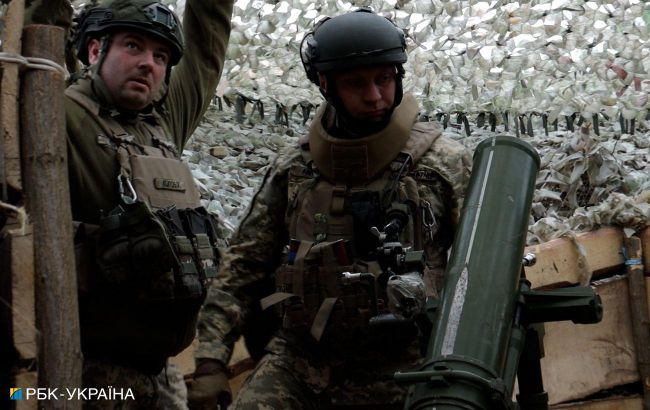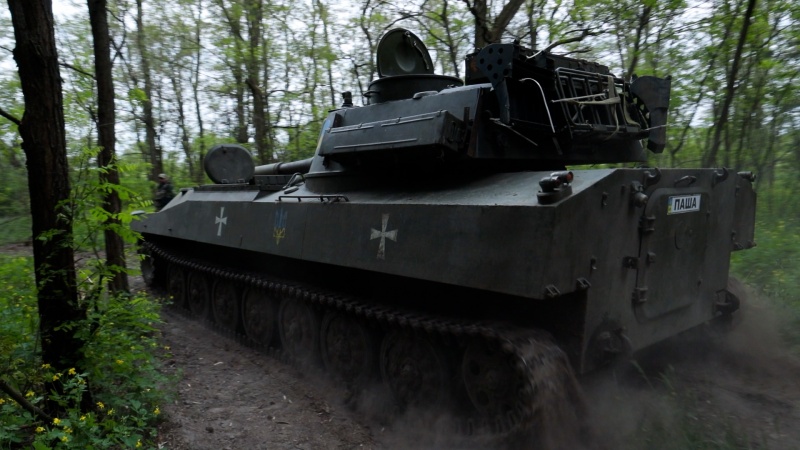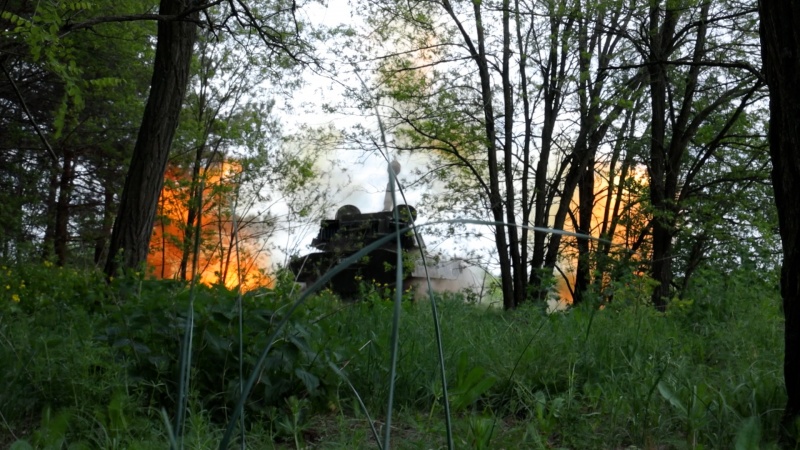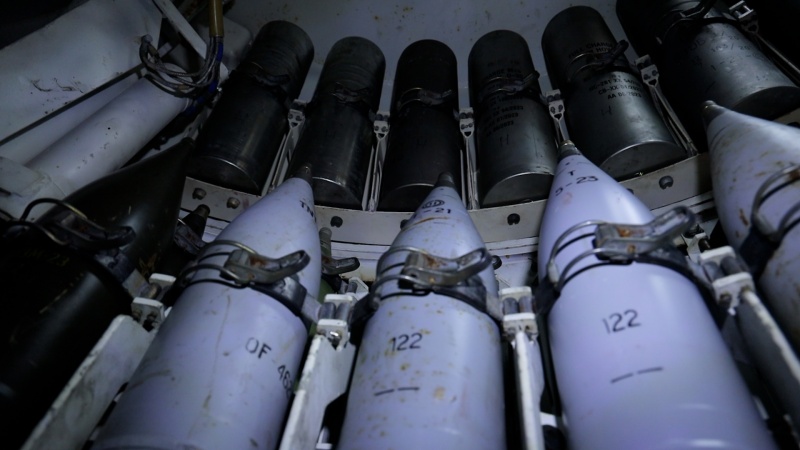'Russians won't enter like in 2022': Report from border in Sumy region
 Ukrainian mortar launchers in Sumy region (Photo: RBC-Ukraine)
Ukrainian mortar launchers in Sumy region (Photo: RBC-Ukraine)
RBC-Ukraine's report from the front lines shows how Ukrainian soldiers are defending the Sumy region from a potential Russian invasion and what is happening in the border area.
More than two years have passed since Russian troops were driven out of Sumy region. Now this region is a likely next target of the Russian occupiers. Like in the neighboring Kharkiv region, they will try to create a so-called sanitary zone here, pushing Ukrainian forces deeper away from the border.
Along which we are moving, the Sumy region's border already looks a little different from many settlements in Donbas - it is a complete ruin. The main difference is that a certain number of locals still live here. So you can still feel life. Soldiers of the 117th Territorial Defense Brigade hold this section of the frontline.
The sounds of strikes can be heard from afar. This means that Ukrainian soldiers are firing Russian positions with mortar and other weapons. Soon we will be able to see their work with our own eyes.
The main requirement at the front is speed. You must quickly get out of the car and run unnoticed to the camouflaged positions. There are always Russian drones in the sky. As soon as the Russians notice the movement of people, they can immediately strike, no matter whether it is military or civilians.
Mortar launchers
A small hole in the ground is visible under the camouflage netting. At first glance, it looks like a small hole. We are asked to go inside to wait out the danger. A dim light breaks through the darkness, and we find ourselves in a large dugout through a corridor. The guys have set up a cozy home here. There are bunk beds on the sides and a table in the middle with various goodies and tea. Everything is made of wood. Here we have an opportunity to talk to the driver of a mortar team.
Roman tells us that Russian troops are constantly trying to break through the defense here, subversive reconnaissance groups periodically come in, and there is constant Russian shelling. It regularly comes to small arms battles, as Russian groups approach Ukrainian checkpoints directly.
"About 30-40 minutes ago, the Russians hit us with a rocket-propelled grenade. In general, it's hot here now," the driver says.
During the conversation, a fighter with the call sign Bout runs into the dugout. The scouts have spotted Russians. They need to quickly prepare a mine. Bout takes a large wooden box and carefully takes out a 120-caliber mine, removing additional protective elements and the safety cap. The soldier handles the ammunition with care to avoid getting any debris or anything else, as the quality of the shot depends on it.
"We have the mine prepared. We will take it to the combat position. We will work on the enemy," he says.
Volodymyr 'Bout' is in a mortar crew. He says he joined the service from the very first days. In civilian life, he was a railroad worker. He is from Sumy, so he had no doubts about going or not going.
"It was hard. But there was nowhere to go. I had to defend Sumy region, my family, all the people, this country," he says. After the war, Bout dreams of returning to his favorite profession.
There is not much time to talk, as the drone is being radioed that it has detected Russian concentrations and target coordinates, and it is time to work.
'Bout' quickly runs down the trench and charges the mortar. The last targeting, a warning shout of "fire!" and a loud explosion. The blast wave is so strong that dust and light objects fly into the air. The commander gives the order to quickly run for cover because, in a few minutes, Russia strikes back.
In the dugout, we can review the results of the Ukrainian soldiers' strike. The operators of the reconnaissance drones show the video from the UAV. They hit Russian concentration near the border. According to the Ukrainian fighters, this mortar hits targets at a distance of up to four and a half kilometers, hits enemy vehicles, and can cover our infantry.
Clover Group
A group of self-propelled howitzers is working in another section of the front. The long-range weapon plays an important role in suppressing Russia's attempts to shell frontline settlements.
The soldiers greeted us with joy and eagerly showed us Pasha, a 2C1 Hvozdyka self-propelled artillery system that can destroy enemy armored vehicles with a range of up to 15 kilometers. The fragmentation charge also hits targets around it.
Senior howitzer gunner Mykhailo is preparing the gun for combat use, while he tells us that he has been working on the Hvozdyka since the Anti-Terrorist Operation, fought in the battle for Debaltseve, and is now defending the Sumy region.
The howitzer's cabin is small, and inside it resembles a submarine. Mykhailo also compares the tracking devices to a submarine, because you look out of the cockpit and see everything that is happening around you.

Photo: RBC-Ukraine
A group of soldiers removes the disguise from the howitzer, it's time to go on a mission. The goal is to hit a group of Russians who are once again trying to make a breakthrough.
The main question now is whether the Russian occupiers will be able to launch another offensive in this part of the front. Senior battery officer Dmytro says that, unfortunately, there is always such a threat: the Russians have already done it in the Kharkiv region, so they may try it here. The aggressors are well entrenched on the border, and they can move additional forces here. The distance to Russia is only 5-10 kilometers.
"The bad thing is that a lot of people do not know that, for example, in the Chernihiv and Sumy regions, there are still battles, still shelling. Very few people talk about it, but it is happening," says Dmytro.
However, the commander says that it will not be like it was in 2022, at the beginning of a full-scale Russian invasion. The Russians will no longer be able to enter easily because the Ukrainian defense has already been significantly strengthened and is ready to fight back.
More than two years ago, Russian troops on this part of the front were opposed mainly by Ukrainian local, civilian, and territorial defenses. Those who were then guerrillas, burning enemy equipment in the forests, have now taken up arms in the ranks of the regular army.



